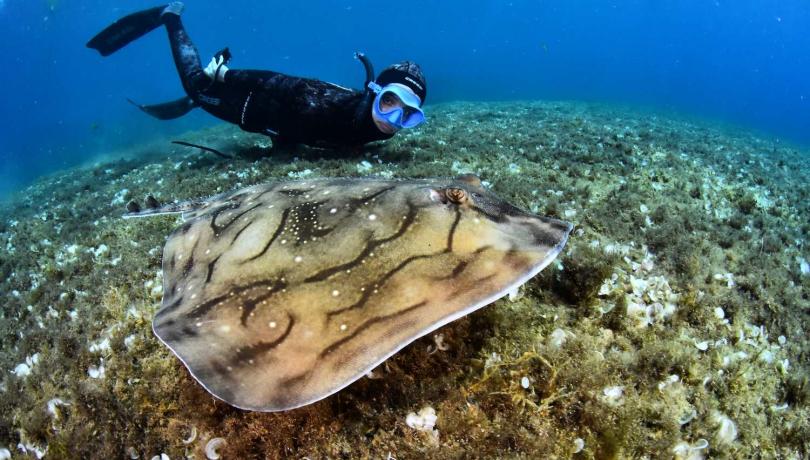The observations can be found on the citizen science platform MINKA, promoted by the Institut de Ciències del Mar (ICM-CSIC).

Every summer, thousands of people come to the Catalan beaches to enjoy the sea, but most of them do not know that they can contribute to improving the knowledge of the state of those beaches with a simple picture. They only have to upload a photograph of a marine or coastal organism - whether it is a plant, an algae or an animal - to the MINKA citizen science platform to participate in a scientific project. In fact, this summer, over 300 volunteers have combined leisure and science contributing to MINKA, promoted by the Institut de Ciències del Mar (ICM-CSIC), breaking a historical record of observations in just 3 years.
Since 2021, when the platform was launched, more than 100,000 observations with over 2,500 different species have been collected along the entire Catalan coast, of which more than 90% are from the marine environment. All of this has been possible thanks to the participation of volunteers who have contributed to significantly increasing the information available on the biodiversity of the Catalan coast, especially the most urbanised areas such as the coast of the city of Barcelona.
"On the Barcelona coast, you can find many way species than you imagine," says Núria González, alias "Sireni" on MINKA and one of the most active volunteers of the initiative in Barcelona.
For his part, Jaume Piera, researcher at ICM-CSIC and promoter and coordinator of MINKA, highlights that "citizen participation has facilitated access to data that would otherwise have been impossible to obtain." Likewise, he encourages citizens to participate in the platform until October 15 by collecting photographs of marine organisms to further increase the number of observations in MINKA.
Finally, Sonia Liñán, a researcher at the ICM-CSIC who is in charge of citizen participation in MINKA, assures that “MINKA works like an Instagram of biodiversity. You don't even need to know what you've seen; just upload your photo to the platform and the MINKA naturalist community will help you and teach you how to identify the species”.
To participate in the biodiversity count of Catalan beaches, it is only necessary to create a user on the web or on the MINKA App for Android and iOS and feel like getting into the water. Anyone with a snorkel and goggles, an underwater camera or a mobile phone case can contribute their bit to marine scientific research. Once uploaded to MINKA, a group of experts from the ICM-CSIC will validate the observations to leave them ready for use by the international scientific community. In this way, the data reaches what is known as “research grade”, so the research community can use it for their studies.
"We have seen how both the number of observations and the number of people on MINKA have increased a lot in the past years," says Berta Companys, a researcher at the ICM-CSIC and a member of the MINKA team.
This success has come about thanks to several citizen science projects that use MINKA to report biodiversity observations. These are the UrbamarBio project on the beaches of Barcelona, the biodiversity in the Fòrum pools and the BioMARató, on the coast of Barcelona, Tarragona and Gerona. These projects organise guided snorkelling or scuba diving outings from June to October 15 for those who prefer to be accompanied by specialists in marine biology.
Exotic and invasive species on the Catalan coast
Until now, thanks to citizen participation, almost thirty exotic species have been reported in MINKA. “We have found four new species records that had never been seen on the Catalan coast. For example, MINKA has been the first platform to document the presence of the pearl oyster Pinctada imbricata in Catalonia, an invasive species with a cosmopolitan distribution,” says Xavier Salvador, marine biologist, ICM-CSIC researcher and data curator of MINKA. The final results of the study of Catalan coastal biodiversity will be analysed and published in autumn when the number of observations decrease due to the drop in citizen participation with the decrease in temperatures.
Getting to know biodiversity to promote its conservation
“For us, it is essential to have the collaboration of citizens. Their involvement provides precious data for the scientific community and even supports political decision-making regarding the environment and its conservation,” says Jaume Piera. In fact, in the case of Barcelona, the data collected on fish has served to create a new layer of fish in the Biodiversity Atlas of Barcelona City Council. "We hope that this urban marine biodiversity data set can contribute to improving the management of marine life on the beaches of this city," concludes the researcher.